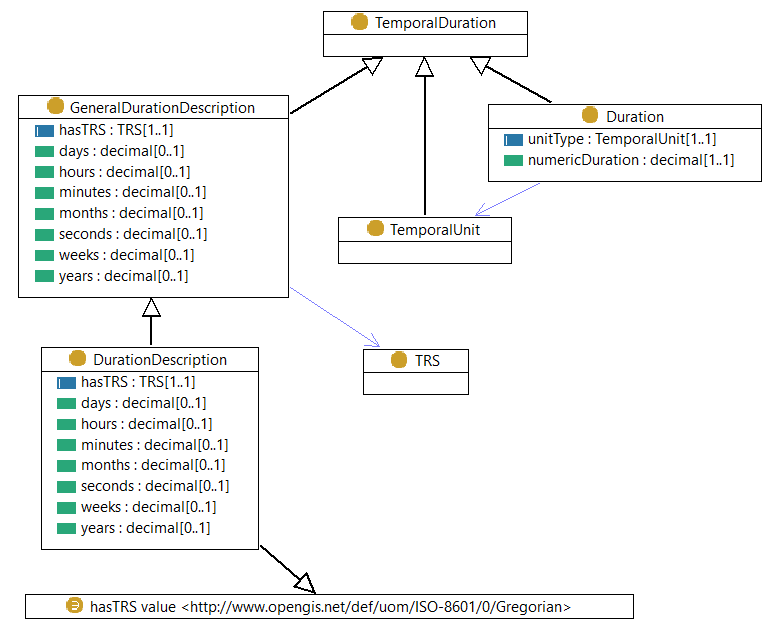New issue
Have a question about this project? Sign up for a free GitHub account to open an issue and contact its maintainers and the community.
By clicking “Sign up for GitHub”, you agree to our terms of service and privacy statement. We’ll occasionally send you account related emails.
Already on GitHub? Sign in to your account
Proposal for representing units of time and their relationships #152
Comments
One way to "remove" those intervals semi-automatically would be for the repair process to reserve them. Then they would no longer be available for other uses, plus other prospective users could see what is happening on the resource calendar. |
|
Example of a resource calendar: https://help.xmatters.com/ondemand/groups/groups-calendar.htm |
|
See also https://plus.google.com/u/0/+SimonCox1959/posts/XiFNP59VU1m
|
|
Actually TemporalUnit is based on Duration |
|
@dr-shorthair - thanks a lot for dropping in and correcting my error! I'll do some re-reading and strikethrough the error above (so your comment will remain valid) and correct the statement. |
|
See also https://www.w3.org/TR/owl-time/#time-prov
We (VF) include a process-flow model. |
|
Last version uses OWL-Time |
This issue came up when discussing time-based resources, but I am putting it here in the main VF repo because it may have broader implications.
I suggest to represent units of time and their relationships, we use owl-time instead of qudt time units, although we are using qudt for physical units.
Qudt focuses on scientific uses of time, for astronomy etc, with a lot of emphasis on velocities.
Owl-time is based on temporal relations, which is what we will need. As they say on the owl-time doc, "The basic structure of the ontology is based on an algebra of binary relations on intervals (e.g., meets, overlaps) developed by Allen and Ferguson for representing qualitative temporal information, and to address the problem of reasoning about such information."
Allen and Ferguson is the source for every good temporal relations library I have ever seen.
To represent availability of time-based resources, I think we will want to use time:DateTimeInterval

, which has a beginning and ending time:DateTimeDescription and a time:Duration.[edit] See @dr-shorthair 's comment below and this diagram:
TemporalUnit is based on TemporalDuration, so my statement that I crossed out was incorrect.
The availability of time-based resources can be represented by a calendar, a collection of vf:Commitments where the unit is a time:DateTimeInterval. The intervals can have any required granularity (days, hours, minutes, whatever) and can have gaps in between them where the time-based resource is not available.
In the recently cited use cases where some equipment is being repaired, the interval of the expected repair would be removed from the availability calendar.
The text was updated successfully, but these errors were encountered: